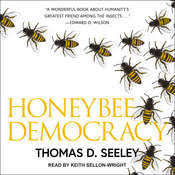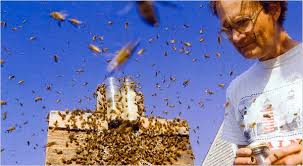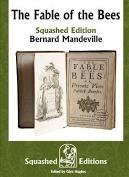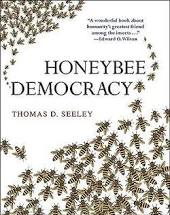Honeybee Democracy (2010) by Thomas Seeley
GoodReads meta-data is 273 pages, rated 4.19 by 901 litizens.
Genre: nonfiction, popular science
Verdict: Hive mind.

In this beguiling, informative, and elegant study, the author tells us much about the bees and a little about himself and other bee-ologists.
All that buzzing, flitting, and waggling that bees do is purposive behaviour and the more closely it is studied the more the purpose(s) are revealed. While hearing someone speak Cantonese sounds like gibberish to the uninitiated when one learns to hear, speak, and write it, the meanings encoded within it gradually appear. So it is with language of bees in their activities.
While the main focus of the book is on site selection for a new nest when a hive swarms (i.e., divides), there is much about how the hive comes to that juncture. An important part of that story is the division of labour among bees. Among the 10,000 bees in a typical hive in upstate New York where most of the research underlying this study was done, a certain percentage are foragers who leave the hive’s nest each morning with the first light on dry days to harvest from sources of food to carry back to the nest.
At certain times some of the emeritus foragers become scouts for a new nesting site. The number is not a great. maybe 50-100 in a hive of 10,000. This is highly specialised role and only a few undertake it. When each single bee finds a potential spot she examines it and then reports back to the hive, which absorbs the input from all of the several scouts. One spot may be scouted by many bees, but another will be scouted only by a few. Yet the ultimate selection may be that latter which only a few scouts initially reported. But as it gains favour, more scouts will visit it and report back.
The bees’ decision is not clouded by history, ego, institutions, or ideology. Site selection shows no preference for doing what they did last time or the time before. Swarms do not try to return to areas used previously. History is not a determinate. Nor does ego enter into it. Even scouts who continually brought back data about a reasonable site, go along with the swarm when it opts for an alternative. Nor are there institutional constraints like a fixed calendar or an electoral college. Still less is there an ideology (or religion) that takes precedence.
It is all so unlike human decision-making where history is always a factor: we keep repeating what we already did (even when it no longer works). Ego which is all for many of us: my way or the highway (for you or me). The fixed calendar prevails in the timing of elections. And ideology: god told me this is THE tree. Compared to much human decision-making, the bees are rational.
There are rare occasions when a hive mind cannot decide. In such instance the hives may (1) stay where it is too long and suffer the fatal consequences or (2) the swarm leaving the hive may itself divide, dawdle, and dither and likewise suffer the consequences delivered by the changing seasons. In these two cases all members of the swarm perish.
To explain the bees’ hive mind the author makes analogies to human decision-making, particularly the fabled New England town meetings, but I fear he has seen few of those or he would have seen history, ego, and ideology driving out assessment, fact, and science. Perhaps he was influenced at a remove by Robert Dahl’s Who Governs? (1961), which rather idealised these meetings. (Dahl changed his mind later in How Democratic is the American Constitution? [2001].)
The methods this author uses to study bee decision-making are ingenious, labor intensive, amusing, and fruitful, yielding a plethora of data as well as stings! The location of a new nest is a life-or-death decision for the members of a swarm and it may take several days for it to be determined. And sometimes the site is not adequate and the swarm dies. This failure is not due to mistaken decision-making so much as the intensity of the elements. The swarm may have chosen the best available site, but not even that site could not withstand the depth of that particular winter. Sad to say, a surprising high percentage of swarms dividing off from a hive, die as hostages to climate and weather. Perhaps a third of them meet this fate. The mortality rate among bees is surprisingly high to this neophyte.

I did find much of the exposition too technical for this layman.
N.B. Many bees were killed in the course of this study. Many.
All these buzzing bees remind me of Dutchman Bernard Mandeville’s Fable of the Bees (1705 [1714]). In it Mandeville implies that private vices lead to social benefits, and that conversely private virtues may lead to social collapse. That is, society is an aggregation of self-interested individuals bound by convention and regulated by law who are more interested in themselves than anyone else. Social cohesion results, paradoxically, from competition and conflict. All benefit from a rules-of-the-game cooperation which constrains the competition and conflict. Hobbes’s war of all against all is brought constrained by baselines with a rulebook and some referees.

If, however, competition and conflict are replaced by a rule of singular virtue, the result will be ruin. The effort to regulate every aspect of life according to (someone’s idea of) virtue will strangle productivity, cooperation, and more. Think of a society ordered by Pat Robertson! Or Rush Cancer. Thomas More. George Pell. Fred Nile. Alan Jones. Bernie Sanders. A monocular society weakens itself.
While the metaphor of the bees may bring to mind Adam Smith’s invisible hand, that is more focused on economic production and distribution, while Mandeville’s remit is more social than economic.
Inspired by this book I read a sample of José Luis de Juan’s Napoleon’s Beekeeper (2019) but found it so convoluted and cryptic it made no sense to me, probably destined for a Booker Prize. However, at the time it rated a respectable 3.25 from 8 litizens on GoodReads.

